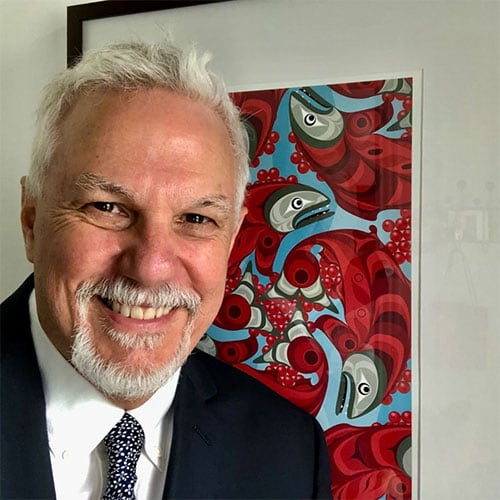Heath Pulliam is an independent education writer with a focus on the language learning space. He’s taught English in South Korea and various subjects in the United States to a variety of ages. He’s also a language learning enthusiast and studies Spanish in his free time.
Almost everyone has studied for a test at some point in their life. Have you ever studied a lot for a test and still not received a great grade? Probably so. This is because not all study methods are created equal. Just because you’ve ‘studied’ doesn’t necessarily mean that the material has stuck in your brain.
Some common study methods don’t do as much as you might think. One technique, however, stands out for its efficiency and effectiveness. It’s called active recall, and it’s regarded by many as the best way to study.
What is active recall?
In short, active recall is the process of pulling information from your brain without prompts. The idea is that when you force yourself to remember something, you memorize it much faster than you would by only reading material or passively studying.
When you’re taking a test and you’re not sure about an answer, you search your brain for the answer; that’s active recall. The action of trying to remember is what essentially crystallizes the information in your head for the long term. Multiple study methods use active recall or the action of searching your brain for an answer.
Active recall forces you to pull information from your mind. It’s not just for doing well on tests but also for long-term retention.
Active recall is praised for its effectiveness, but it is also mentally taxing. Attempting to recall things that are not in the front of your mind is tiring, which is part of why some opt out of using it.
Dr. Cal Newport, author of Deep Work, says:
“It’s almost like you have a pseudo-photographic memory when you study this way.”
Passive and active study
Most people are taught to study, but less about how to study. People end up using passive study techniques, like rereading material or rewatching lectures. Although not particularly effective, studies show that reading and rereading notes remains university students’ most common study method. (Dunlosky, 2013).
These methods might feel like effective studying but aren’t really helping much. Yes, passive study methods such as reading, highlighting, or watching can help, but can also give you a false sense of understanding.
With these methods, when the time comes to retrieve the information, you struggle to recall it because it is not in your long-term memory.
The first step to becoming excellent at studying is understanding how important active study methods are, such as flashcards, practice testing, or practice teaching – all methods that use active recall.
Spaced repetition
If you’re researching study methods, you’ve probably encountered the term spaced repetition. This technique can be incorporated into active recall study methods, primarily flashcards.
Spaced repetition involves reviewing information at increasingly longer intervals in order to improve long-term memory. You are using this technique when you learn something, so review it a day later, then a week later and then a month later. It helps fight your brain’s natural process of forgetting things.
Combining spaced repetition with active recall is always a recipe for successful study.
So, what methods can you use to employ active recall in your study sessions?
Summarize what you know
The simplest way to practice active recall is to try to remember the material actively. To do this, read or reread some material, then take some time away—take a walk, snack break, or whatever you like to do to take a break.
During this break, try to replicate in your mind as much about the topic from scratch as if you had to teach about it. Don’t be discouraged if you have trouble remembering; part of the learning process is forgetting material and then remembering it.
When using this for language acquisition, make up relevant sentences and translate them into your target language. What type of vocabulary were you learning? What grammatical structures were new to you?
Take a mental note of which elements you were able to remember and which ones gave you trouble.
When finished, go back to the material and review. Were you able to remember things? Whether you could or not, you’ve helped yourself. Your attempt to remember is you practicing active recall.
When you do successfully remember something, you’ll realize that it is locked in your long-term memory. This method is as simple as it is productive.
Teach a friend
Similar to mental summarizing, after studying, find a friend and do your best to explain the topic to them. Language learning could involve explaining how a new grammar pattern works in your target language or taking sentences and phrases and translating them to a friend.
As a teacher, your best lessons are the ones where you know the material inside and out. If you can effectively explain and teach someone about your target language, you are that much closer to mastering the information yourself.
Flashcards
Flashcards, especially when combined with spaced repetition, are the king of study methods for language acquisition.
Between all that they can be used for, they are especially good for language learning, no matter what part of the language you’re studying. This is one of the best ways to learn sentence structure that does not mirror your native tongue, conjugations for speedy use and general vocabulary.
I have found that using a spaced repetition-based flashcard program is the best way to study a language. This way, you don’t have to schedule a bunch of paper flashcards manually.
Among the most popular programs for language learners is Anki. Anki is a spaced repetition flashcard program. With it, you create your cards and the program schedules them at increasingly longer intervals. It is also used widely among students studying for large tests, like medical and law exams.
To make the best flashcards, make them yourself. Downloading a big set of flashcards for your target language is tempting but not particularly helpful. Instead, after each study session, make a few flashcards yourself covering the new vocabulary/grammar you’ve just learned about.
One more thing: do not use multiple-choice answers for your cards. Active recall happens when you produce information without prompts or assistance.
Personally, I use flashcards every day to learn Spanish through Anki. This program has a learning curve, but the payoff makes it worth it.
Test yourself
The goal of studying for a test is to be able to answer questions about a topic or, even better, know the material for real-world application. As stated earlier, active recall happens during testing, so why not use this form of active recall before testing?
Use your materials to make a mock exam in this method, then take it. Through actively remembering to answer each question, the ones you get right will stick in your brain. Review the questions that you couldn’t remember and retake the test focusing on them.
While not particularly complicated, these tips and methods’ effectiveness comes from their use of active recall. As you forget information and pull it from the depths of your memory, you solidify it for yourself.
Forgetting plays an important role in learning something for long-term memory.
Now, get to studying; how are you going to use the power of active recall in your routine?
References
Dunlosky, J. "Improving Students’ Learning With Effective Learning Techniques: Promising Directions From Cognitive and Educational Psychology." Association for Psychological Science, 2013, 1-6





